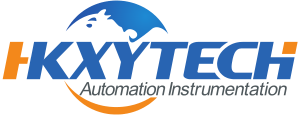PLC interview questions
1. What is PLC?
Programmable logic controllers, also called programmable controllers or PLCs, are solid-state members of the computer family, using integrated circuits instead of electromechanical devices to implement control functions. They are capable of storing instructions, such as sequencing, timing, counting, arithmetic, data manipulation, and communication, to control industrial machines and processes.
PLCs can be thought of in simple terms as industrial computers with specially designed architecture in both their central units (the PLC itself) and their interfacing circuitry to field devices (input/output connections to the real world).
2. What are the different modules in PLC?
CPU
Communication module
Digital input
Digital output
Analog input
Analog output
Pulse input
3. Explain PLC operation with controlling motor as example:

With reference to the picture:
PLCs consist of input or point modules, a central processing unit (CPU), and output or point modules. An input accepts a variety of digital or analog signals from different field devices (sensors) and converts them to a logic signal which the CPU can use. The Processor makes decisions and executes control instructions in memory based on the instructions for the program.
Output modules transform CPU control instructions into a digital or analog signal which can be used to control different field devices (actuators). Use a programming tool to enter the directions you want. These instructions specify what a given input will be achieved by the PLC. These instructions specify what a given input will be achieved by the PLC.
4. What are the different programming languages used in PLC?
There are five types of programming languages that can be used to program PLC, which include:
Ladder Diagram (LD) programming language
Instruction List (IL) / Statement List (SL) programming language
Sequential Function Chart (SFC) / Grafcet programming language
Function Block Diagram (FBD) programming language
High-level programming languages (high-level), for example Visual Basic
Ladder diagrams are easy to understand because they use a graphical approach, namely using the electromagnetic-mechanical relay component symbols (coil and contact), function blocks, such as timers, counters, triggers, conditionals, and function blocks that are self-defined by the programmer.
5. Why we use PLC over relay logic?
The implementation of a system using electromechanical standard and timing relays would have made this control panel a maze of large bundles of wires and interconnections. And it is better to use PLC if an application needs requirements listed below:
Flexibility in control logic changes
Need for high reliability
Space requirements important
Data collection requirement
Frequent control logic change
Need for rapid modification
Need for future growth
Where system requirements call for flexibility or future growth, a programmable controller delivers returns that outweigh any initial cost advantage of a relay control. Even in a case where no flexibility or future expansion is required, the troubleshooting and maintenance aids provided by a PLC can greatly benefit a large system.
6. What is the difference between PLC and your Personal computer?
The architecture of a PLC’s CPU is essentially the same as that of a general-purpose computer; however, they are differentiated by some important characteristics. Firstly, unlike machines, PLCs are explicitly designed to survive the harsh industrial conditions
A well-designed PLC can be mounted in an environment with significant amounts of electrical noise, electromagnetic interference, mechanical vibration and humidity-free of condensation
7. What are the types of PLCs available in market?
Micro PLCs: Micro PLCs are used in applications controlling up to 32 input and output devices, 20 or less I/O being the norm
Small PLCs: Small PLCs controls 32 to 128 I/O
Medium PLCs: 64 to 1024 I/O
Large PLCs: 512 to 4096 I/O
Very large PLCs: 2048 to 8192 I/O
8. Advantages of PLCs:
Highly reliable solid-state components
Small size, minimal space required
Service without disturbing wiring
Eliminate long wire/conduit runs
Software control relays
Can take output in report form.
Microprocessor-based system:
Higher level of performance
Higher quality products
Multifunctional capability
Communication capability
Programmable memory:
Simplifies changes
Flexible control
Modular architecture:
Installation flexibility
Easily installed
Reduces hardware cost
Expandability
9. How to program PLCs ?
Each PLC fabricator has its own PLC programming tools. Siemens, for example, uses Simantic S7 Manager, Allen Bradley uses RS Logix and Modicon uses programming software for PLC pro. The language used for programming is Ladder Logic (LD), Statement List (STL), Functional Block Diagram (FBD), Sequential Function Chart (SFC), Instruction List (IL), etc.
10. What is PLC scan?
PLC Scan The PLC program is executed as part of a repeat process called a scan. A PLC scan ends when the CPU reads input status. Next, you execute the application programme. The CPU then performs internal communication and diagnostic functions. Eventually, the performance status is changed by the CPU. This process repeats in run mode as long as the CPU.
The time required to complete a scan depends on the size of the program, the number of I/Os, and the amount of communication required.
Article from: https://automationforum.co/
Latest News
-
ORBINOX EK (SER.15) Uni-directional high performance knife gate valve
 November
21, 2025
November
21, 2025
-
ORBINOX EX (SER.10) model Knife Gate Valve
 November
21, 2025
November
21, 2025
-
Samson 3260/3 pneumatic - DIN Globe valve
 November
14, 2025
November
14, 2025
